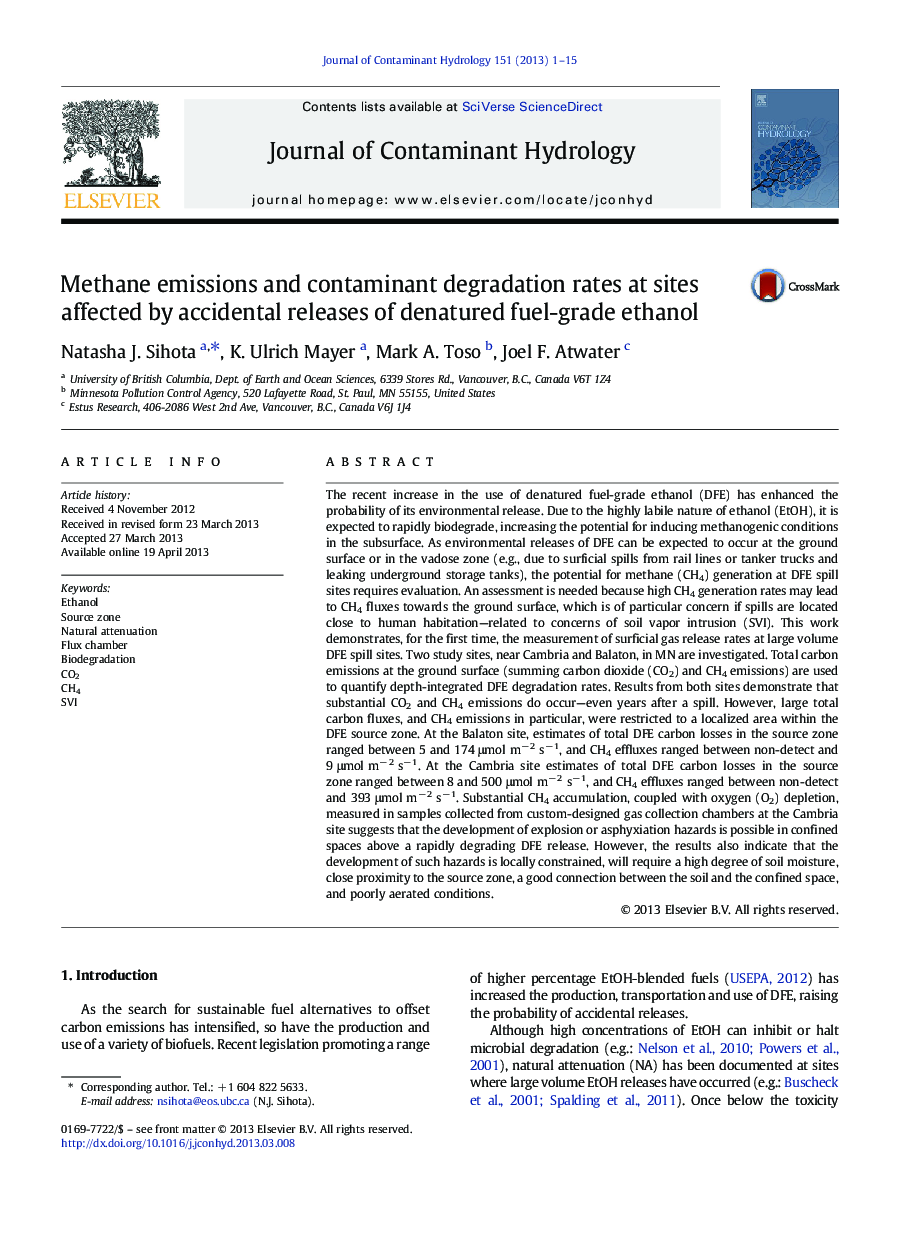| کد مقاله | کد نشریه | سال انتشار | مقاله انگلیسی | نسخه تمام متن |
|---|---|---|---|---|
| 4546639 | 1627056 | 2013 | 15 صفحه PDF | دانلود رایگان |

• CO2 and CH4 effluxes were measured at two denatured fuel grade ethanol spill sites.
• Total measured carbon emissions allowed source zone delineation.
• Biodegradation rates substantially exceed rates at petroleum hydrocarbon sites.
• CH4 effluxes did occur, restricted to source zone areas with a shallow water table.
The recent increase in the use of denatured fuel-grade ethanol (DFE) has enhanced the probability of its environmental release. Due to the highly labile nature of ethanol (EtOH), it is expected to rapidly biodegrade, increasing the potential for inducing methanogenic conditions in the subsurface. As environmental releases of DFE can be expected to occur at the ground surface or in the vadose zone (e.g., due to surficial spills from rail lines or tanker trucks and leaking underground storage tanks), the potential for methane (CH4) generation at DFE spill sites requires evaluation. An assessment is needed because high CH4 generation rates may lead to CH4 fluxes towards the ground surface, which is of particular concern if spills are located close to human habitation—related to concerns of soil vapor intrusion (SVI). This work demonstrates, for the first time, the measurement of surficial gas release rates at large volume DFE spill sites. Two study sites, near Cambria and Balaton, in MN are investigated. Total carbon emissions at the ground surface (summing carbon dioxide (CO2) and CH4 emissions) are used to quantify depth-integrated DFE degradation rates. Results from both sites demonstrate that substantial CO2 and CH4 emissions do occur—even years after a spill. However, large total carbon fluxes, and CH4 emissions in particular, were restricted to a localized area within the DFE source zone. At the Balaton site, estimates of total DFE carbon losses in the source zone ranged between 5 and 174 μmol m− 2 s− 1, and CH4 effluxes ranged between non-detect and 9 μmol m− 2 s− 1. At the Cambria site estimates of total DFE carbon losses in the source zone ranged between 8 and 500 μmol m− 2 s− 1, and CH4 effluxes ranged between non-detect and 393 μmol m− 2 s− 1. Substantial CH4 accumulation, coupled with oxygen (O2) depletion, measured in samples collected from custom-designed gas collection chambers at the Cambria site suggests that the development of explosion or asphyxiation hazards is possible in confined spaces above a rapidly degrading DFE release. However, the results also indicate that the development of such hazards is locally constrained, will require a high degree of soil moisture, close proximity to the source zone, a good connection between the soil and the confined space, and poorly aerated conditions.
Journal: Journal of Contaminant Hydrology - Volume 151, August 2013, Pages 1–15